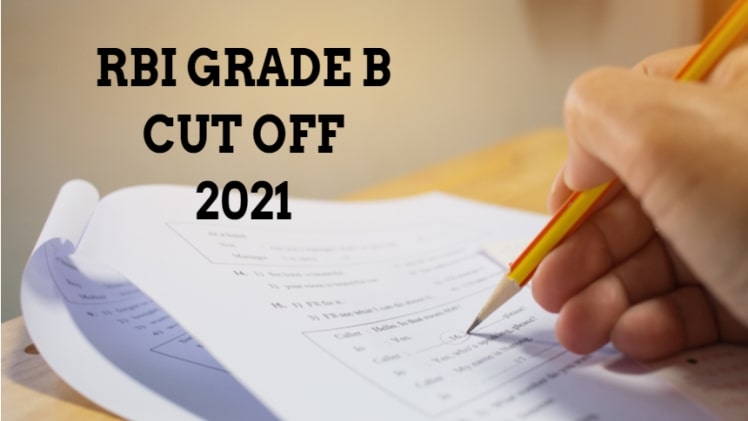The RBI Grade B exam syllabus is similar to the syllabus of various other bank exams. The Grade B Officer written exam is performed in two levels, and the government body assigns the syllabus for both levels. We are looking for people who are passionate about learning new Matokeo ya Darasa la Saba 2022 and sharing them with others.
RBI Grade B – All You Need To Know About The Exam Pattern And The Syllabus
- Phase – I Examination
- Phase – II Examination
- Interview
The syllabus of the RBI Grade B (Phase 1) comprises four sections:
- General Awareness
- English Language
- Reasoning Ability
- Quantitative Aptitude
Candidates can refer to the RBI Grade B Officer detailed syllabus as suggested below to prepare for the RBI Grade B exam.
Syllabus For:
Quantitative Skills For RBI Grade B:
- Ratio & Proportion
- Percentage
- Mensuration
- Average
- Speed,
- Time and
- WorkTime and Distance
- Data Interpretation
- Probability
- Simple and Compound Interest
- Profit and Loss
Reasoning Ability for RBI Grade B:
- Puzzles
- Syllogism
- Seating Arrangement
- Direction Test
- Input-Output
- Blood Relation
- Reasoning Analogy
- Coding-Decoding
- Alphanumeric series
The English Language For RBI Grade B
- Vocabulary
- Fill in the Blanks
- Match the columns
- Grammar
- Tenses Rules
- Reading Comprehension
- Sentence Rearrangement
- Idioms And phrases
- Sentence Framing
General Awareness For RBI Grade B
- Current Affairs
- Indian Financial System
- Banking History
- Indian Banking System
- Economic News
- Monetary Plans
- Books and Authors
- Sports News
- National and International Issues
- Awards
RBI Grade B (Phase 2 Exam) Syllabus
- Economic and Social Sciences
- English
- Finance and Management
The questions are mainly descriptive, so prepare accordingly.
Syllabus Of SEBI Grade A 2022
Security and Exchange Board of India has specified the SEBI Grade A syllabus 2022 on their official website in the form of a PDF.
The SEBI Grade A exam pattern 2022 consists of different subjects as per the norms. Therefore, the aspirants should have a look at SEBI Grade A Syllabus.
The table given below will assist you to understand the latest exam pattern of SEBI Grade A Phase 1:
| Paper
Paper 1 |
Stream/Subjects | No. of Ques. | Maximum Marks | Duration in minutes
60 |
Cut-Off (%)
30 |
| English Language | 20 | 25 | |||
| General Awareness | 20 | 25 | |||
| Quantitative Aptitude | 20 | 25 | |||
| Test of Reasoning | 20 | 25 |
Total – 80
| Paper 2 | General Stream:
Management, Commerce, Costing, Finance, Accountancy, Companies Act and Economics |
50 | 100 | Duration:
40 |
Cut off:
40 |
| Information Technology, Civil and Electrical Engineering Stream, Official Language Stream | 50 | 100 | |||
| Research Stream: Finance and Commerce, Economics, Statistics, and Econometric. | 50 | 100 | |||
| Aggregate Cut off | 40 |
Exam Pattern Of SEBI Group A- (Phase 2)
Candidates getting the cut-off marks in Phase 1 will be permitted to attempt for the SEBI Grade A Phase 2 Exam.
Two papers are set in Phase 2 exams, they are Paper I and Paper II of 100 marks each.
All the data related to SEBI Grade A Phase II Exam Pattern is suggested below in the table form:
| Paper | Stream/Subjects | Maximum Marks | Duration in minutes | Cut-Off (%) |
| Paper 1 | English paper will be in the form of a Descriptive Test to examine the drafting skills | 100 | 60 | 30 |
|
Paper 2 |
General Stream: Multiple Choice Question on Accountancy, Management Commerce, Finance, Companies Act, Economics, and Costing. | 100 | 40 | 40 |
| Civil and Electrical Engineering Stream, Legal, and Official Language stream: MCQs on Specialized subjects related to the stream.
|
100
|
40 |
40 |
|
| Research Stream: Multiple Choice Question on Economics, Econometrics, Statistics, Finance and Commerce. | ||||
| Aggregate Cut off | 50% |
Conclusion :
If you want to prepare for both exams, the only way to succeed is to work hard.
We hope that the above-mentioned syllabus and exam pattern will guide and help you with your exam preparation.
Go through the syllabus thoroughly, check the previous year’s question paper and practice accordingly.
Let’s Connect with our education blogs India for further information.

